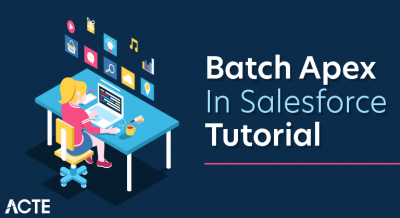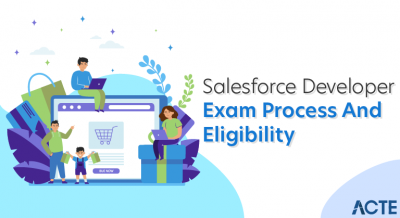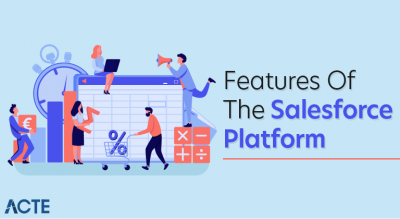
- Introduction to Salesforce Admin Certification
- Importance of Admin Certification
- Exam Structure and Syllabus
- Key Concepts Covered in the Exam
- Data Management and Security
- Automation with Workflow Rules and Flows
- Reports and Dashboards
- User Management and Access Controls
Introduction to Salesforce Admin Certification
The Salesforce Admin Certification is a globally recognized credential that validates an individual’s expertise in Salesforce administration, configuration, and management. It demonstrates a professional’s ability to effectively handle core administrative functions, including managing users, configuring security settings, creating reports and dashboards, and automating business processes through tools like workflow rules and flows. This certification is designed for administrators, consultants, and business analysts who want to prove their proficiency in the Salesforce platform and stand out in the competitive job market. Earning the Admin Certification not only enhances career prospects but also builds credibility within the Salesforce ecosystem, showcasing a commitment to mastering Salesforce best practices through Salesforce Training. Certified admins are well-equipped to optimize Salesforce implementations, improve user adoption, and tailor the platform to meet specific organizational needs. Furthermore, the certification process encourages continuous learning, helping professionals stay updated with Salesforce’s frequent updates and new features. This ongoing knowledge is critical in a technology landscape that evolves rapidly, ensuring certified admins can leverage the platform’s latest capabilities to drive business growth and efficiency. For organizations, having certified Salesforce admins ensures reliable system management, data security, and streamlined operations, which ultimately contributes to higher return on investment. Overall, the Salesforce Admin Certification is a valuable asset for anyone looking to build a successful career in Salesforce administration and to support their organization’s digital transformation efforts confidently.
Do You Want to Learn More About Salesforce? Get Info From Our Salesforce Training Today!
Importance of Admin Certification
Admin Certification in Salesforce holds significant importance for both individuals and organizations aiming to maximize the platform’s potential. For professionals, earning a Salesforce Admin Certification validates their expertise in configuring and managing Salesforce environments, demonstrating a thorough understanding of core concepts such as user management, security, data management, automation, and reporting. This credential not only boosts credibility but also enhances career opportunities by distinguishing certified admins in a competitive job market, as highlighted in the Guide to Salesforce Campaign. Certified admins are better equipped to troubleshoot issues, streamline business processes, and customize Salesforce to meet organizational needs efficiently, ultimately driving greater user adoption and satisfaction. From an organizational perspective, having certified admins ensures that Salesforce implementations follow best practices, reducing errors and enhancing system stability and security. Certified admins can effectively translate business requirements into technical solutions, aligning Salesforce capabilities with strategic goals.
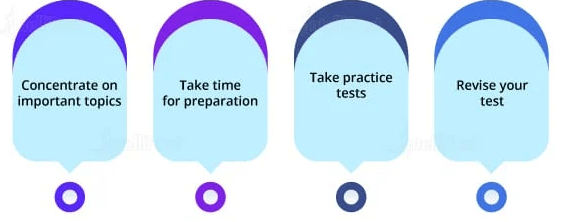
Furthermore, certification encourages continuous learning and staying updated with the platform’s frequent enhancements, which is crucial given Salesforce’s rapid innovation cycle. This commitment to knowledge helps organizations remain agile and competitive by leveraging the latest features and improvements. Overall, Admin Certification serves as a benchmark for quality and professionalism, empowering individuals to deliver impactful solutions while giving organizations confidence in their Salesforce investments. In today’s digital-driven business landscape, investing in admin certification is a smart strategy for fostering skilled talent and optimizing CRM success.
Exam Structure and Syllabus
- The exam has 60 multiple-choice questions to be completed in 105 minutes with a passing score of about 65%.
- It covers Salesforce fundamentals, configuration, security, and best practices for managing Salesforce environments.
- Key topics include Organization Setup, User Setup, and Security and Access (profiles, roles, sharing rules).
- It tests knowledge on Standard and Custom Objects, Sales and Marketing Applications, and Service and Support Applications.
- Covers Activity Management, Collaboration tools (Chatter), and Data Management including imports, exports, and validation, with integrations in Salesforce Commerce Cloud.
- Includes Reports and Dashboards creation and customization, plus Workflow and Process Automation (workflow rules, process builder, flows).
- No formal prerequisites, but hands-on Salesforce experience and use of official study guides and practice exams are highly recommended.
- Organization Setup: Configuring company settings like fiscal years, business hours, and currencies.
- User Setup and Management: Creating users, assigning profiles and permission sets, and controlling access.
- Security and Access: Managing role hierarchies, sharing rules, and field-level security is covered in Salesforce Training.
- Standard and Custom Objects: Customizing objects, fields, and relationships to model business data.
- Sales and Marketing Applications: Managing Leads, Accounts, Contacts, Opportunities, and Campaigns.
- Service and Support Applications: Handling Cases, Solutions, and Knowledge for customer support.
- Reports, Dashboards, and Automation: Creating reports/dashboards and automating processes using Workflow, Process Builder, and Flow.
- Definition and Purpose: Workflow Rules and Flows are automation tools in Salesforce designed to simplify business processes by automatically performing actions like sending emails, updating fields, or creating records based on specific criteria.
- Workflow Rules Overview: Workflow Rules are rule-based automations triggered when records meet certain conditions. They support immediate or time-based actions such as sending alerts, updating fields, creating tasks, or outbound messages.
- Flows Overview: Flows offer advanced automation with drag-and-drop, complex logic, and multi-object interaction, as detailed in the Guide to Salesforce Data Validation Rules.
- Trigger Mechanisms: Workflow Rules trigger based on record creation or updates, evaluating criteria set by the admin. Flows can be triggered by record changes (record-triggered flows), user actions (screen flows), or scheduled times, offering more trigger options.
- Actions and Complexity: Workflow Rules support a limited set of actions, ideal for simple automations. Flows allow for multi-step processes, decision branches, data manipulation, and integration with external systems, making them suitable for complex business needs.
- Use Case Suitability: Use Workflow Rules for straightforward tasks like sending reminders or field updates. Use Flows for intricate processes requiring user interaction, branching logic, or data operations across multiple objects.
- Transition and Best Practice: Salesforce is encouraging the shift from Workflow Rules to Flows, as Flows offer greater power and flexibility. New automation projects should prioritize Flows, though existing Workflow Rules can still be maintained and migrated when needed.
Would You Like to Know More About Salesforce? Sign Up For Our Salesforce Training Now!
Key Concepts Covered in the Exam
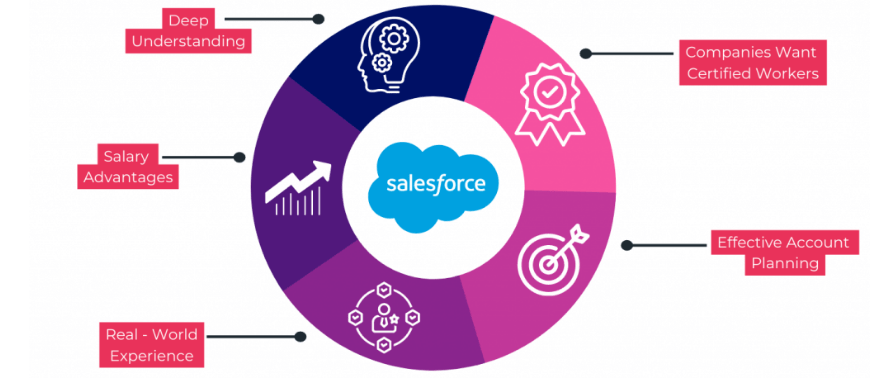
Data Management and Security
Data Management and Security are vital components in Salesforce to ensure that organizational data is accurate, reliable, and protected against unauthorized access or loss. Effective data management starts with data quality practices such as validation rules, duplicate management, and regular data cleansing to maintain accuracy and consistency. Salesforce provides tools to import, export, and update data efficiently while enforcing standards that prevent errors and inconsistencies. Security plays a critical role by safeguarding sensitive information through robust access controls, encryption, and monitoring. Salesforce employs a multi-layered security model that includes organization-wide defaults, profiles, roles, permission sets, and sharing rules to control who can view or modify data at different levels, which works alongside Standard Controllers in Salesforce. In addition, features like field-level security restrict access to sensitive fields even within records a user can access. Data encryption both at rest and in transit protects information from external threats, while audit trails and event monitoring enable tracking of data changes and user activities for compliance and forensic purposes. Backup and recovery processes also form an essential part of data security, ensuring business continuity in case of accidental deletion or system failures. Furthermore, compliance with industry standards such as GDPR, HIPAA, and SOC reports is supported through Salesforce’s built-in security features and regular updates. Together, these data management and security measures help organizations build trust with their customers, reduce risks, and make informed decisions based on reliable data. Maintaining a strong focus on these areas is crucial as businesses increasingly rely on cloud platforms like Salesforce to drive growth and innovation in a secure environment.
To Explore Salesforce in Depth, Check Out Our Comprehensive Salesforce Training To Gain Insights From Our Experts!
Automation with Workflow Rules and Flows
Reports and Dashboards
Reports and dashboards are essential tools in Salesforce that help organizations visualize and analyze their data effectively. Reports provide detailed lists or summaries of records based on specific criteria, allowing users to filter, group, and calculate data to uncover valuable insights. Users can create different types of reports such as tabular, summary, matrix, and joined reports depending on how they want to organize and view their data. For example, a sales manager might run a summary report to see total sales by region or a matrix report to compare sales performance by product and time period. Dashboards, on the other hand, are visual displays that present key metrics and trends through components like charts, gauges, tables, and metrics, which can be integrated with Amazon Web Services Salesforce. They offer a high-level overview of business performance by consolidating multiple reports into one easy-to-read interface. Dashboards are highly customizable, allowing users to select data sources, set refresh intervals, and configure component layouts to suit different roles and objectives. By using dashboards, executives and teams can quickly monitor progress against goals, spot trends, and identify areas that need attention without digging into raw data. Both reports and dashboards support collaboration by allowing users to share insights across teams and set up scheduled email deliveries. Together, reports and dashboards empower organizations to make data-driven decisions, improve operational efficiency, and align their strategies with real-time performance metrics. As businesses grow, mastering these tools becomes crucial for maintaining visibility and agility in an increasingly data-driven environment.
Are You Preparing for Salesforce Jobs? Check Out ACTE’s Salesforce Interview Questions and Answers to Boost Your Preparation!
User Management and Access Controls
User Management and Access Controls are fundamental aspects of Salesforce that ensure the right people have appropriate access to data and functionality within an organization. Effective user management begins with creating and maintaining user accounts, assigning profiles, roles, and permissions that define what users can see and do. Profiles control the baseline level of access by specifying object permissions, field-level security, and user interface settings, while roles determine data visibility through the role hierarchy, allowing managers to see their team’s records. Permission sets offer additional flexibility by granting extra permissions without changing a user’s profile, enabling fine-tuned access control tailored to individual needs, as taught in Salesforce Training. Access controls extend beyond profiles and roles to include sharing rules, manual sharing, and organization-wide defaults (OWD), which collectively regulate record-level visibility and collaboration. For example, OWD settings establish the baseline data sharing model such as private or public read-only while sharing rules can open up access based on criteria or ownership. Two-factor authentication and login IP restrictions add security layers to protect sensitive information. Proper user management ensures data integrity, compliance with company policies, and minimizes risks of unauthorized access. It also supports operational efficiency by providing users with the tools and data they need without unnecessary clutter or exposure. Regular audits and monitoring of user permissions help maintain a secure environment, especially as organizations grow and roles evolve. Overall, user management and access controls are critical to balancing security with productivity, enabling organizations to operate confidently in a secure and compliant manner.

